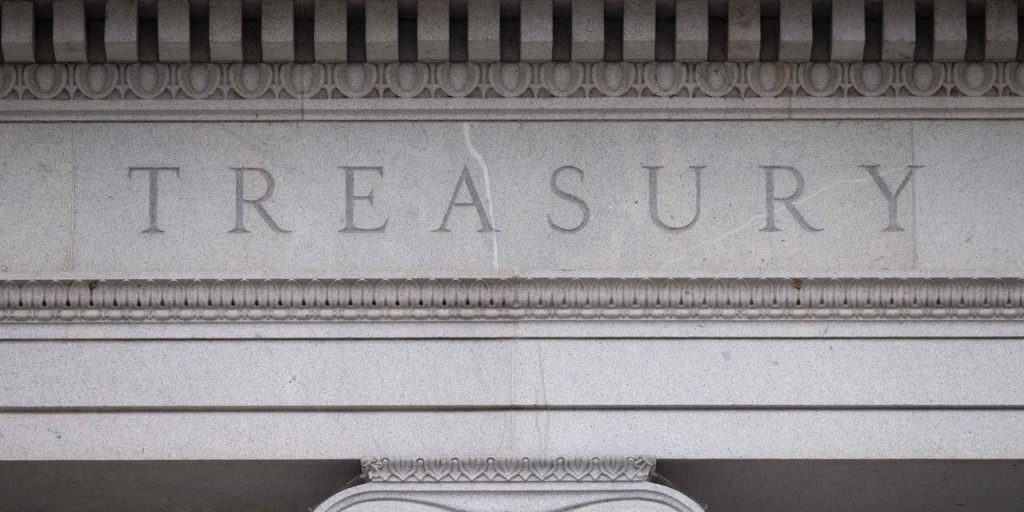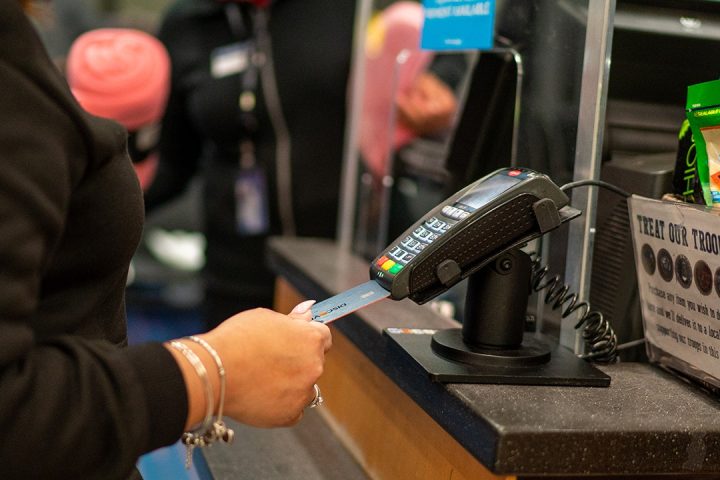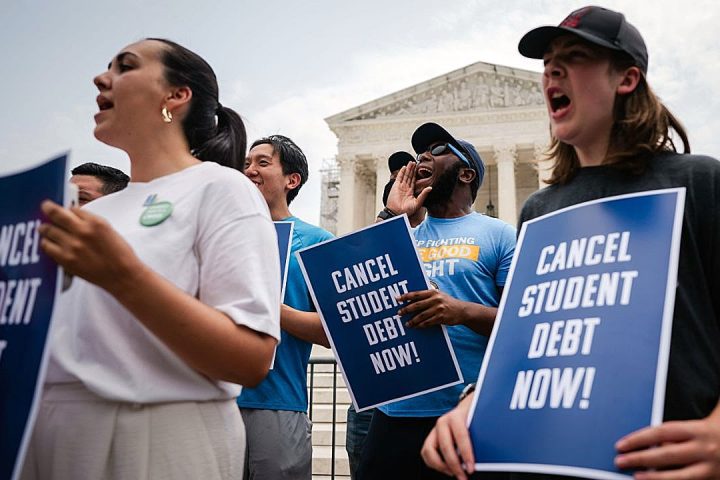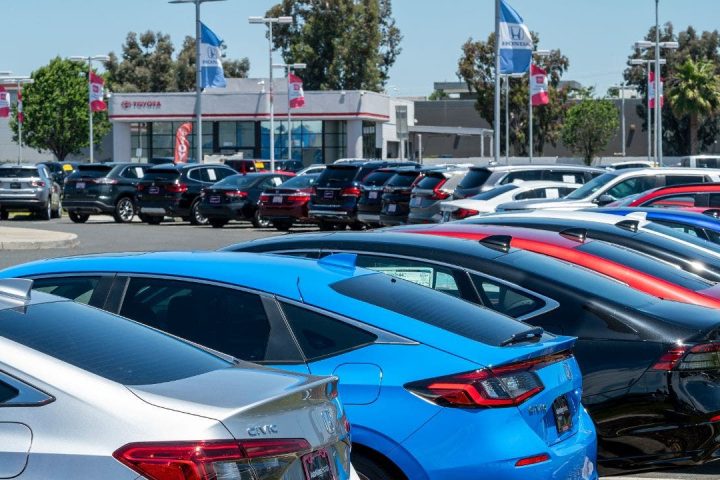The pop in Treasury yields will likely push mortgages, car loans and other financing even farther out of reach for consumers, say experts.
Lenders are looking at the credit scores and financial health of the applicant in front of them when deciding how much money they’ll lend and at what interest rate.
But they also have to consider the broader picture on interest rates in order to price their loans. That’s why growing focus on the yields for longer-dated Treasury debt matters for would-be borrowers, who are already getting pinched by higher prices and facing tighter lending standards.
The yield for longer-dated Treasury debt is one of the factors informing the rate decisions that lenders make on mortgages and cars. Interest rates on car loans tend to follow the direction of the five-year Treasury yield, while mortgage rates generally follow the 10-year Treasury note’s yield, experts note.
With rising yields, consumers “are going to pay more for new credit or credit that’s adjustable,” said Ron Haynie, senior vice president, housing finance policy, at the Independent Community Bankers of America, a trade association. “As the cost of credit goes up, it means it makes it more difficult for consumers to qualify,” he added.
Yields kept sliding Wednesday after geopolitical turmoil over the weekend with the Hamas attacks on Israel. Bond prices and yields move in opposite directions, and the 10-year note is a haven for investors in times of uncertainty. Investors also looked at remarks from Federal Reserve officials in recent days about the recent surge in yields as a sign of less inclination to increase interest rates.
On Wednesday morning, the yield on the 10-year Treasury note
BX:TMUBMUSD10Y
was 4.592%, down from 4.654% on Tuesday afternoon and down from 4.783% on Friday. The yield on the five-year Treasury note
BX:TMUBMUSD05Y
was 4.611%, down from 4.648% on Tuesday and down from 4.76% on Friday. The 30-year bond
BX:TMUBMUSD30Y
was 4.747% on Wednesday, down from more than 4.94% on Friday, which as the highest level since September 20, 2007.
Yet there are still questions on what’s next for the roughly $25 trillion Treasury market, and that has implications for consumers and their financing needs.
Loans for houses and cars are the big-ticket types of consumer financing affected by Treasury yields, but not the only ones. The yield on the 10-year note is also cooked into the interest rate formula when federal student loan rates are set each spring.
The story of rising rates and increasing borrowing costs have been playing out for well over a year. Just ask anyone who’s been looking for a house.
The recent surge in yields may be an opportunity for fixed-income investors, but it’s an obstacle for borrowers — here’s a look at the implications.
How mortgage rates are affected by 10-year yields
Home buying hopefuls already have to contend with high rates and low inventory. “Affordability is as weak as it’s been in 30 years, if not longer,” Warren Kornfeld, senior vice president at Moody’s Investors Service, told MarketWatch.
The rising yields on the 10-year Treasury note deepen the problem, Kornfeld said. High mortgage rates are a challenge for buyers and also worsen the “lock-in effect.” That’s when home owners are disinclined to sell their home because they don’t want to lose their existing — and usually much lower — mortgage rate, he noted.
Last week, 30-year fixed mortgages averaged 7.49%, up from 6.66% a year ago, according to Freddie Mac
FMCC,
The “spread” between the 10-year yield and the average 30-year mortgage rate above that has reached “historically high levels,” according to a Monday letter from housing industry trade groups to Federal Reserve Chairman Jerome Powell.
The gap between the two rates signals “deep-seated uncertainty about where the Fed is headed,” said the Mortgage Bankers Association, the National Association of Home Builders and the National Association of Realtors. The groups are asking for the central bank to make a clear statement that its not considering future increases for its benchmark rate.
The Fed stayed at current rates in its September meeting and is scheduled to announce its next decision on Nov. 1.
What five-year Treasury yields mean for car loans
The yields on five-year Treasury notes are a strong signal on where car loan rates are heading, said Jonathan Smoke, chief economist at Cox Automotive, which owns Kelley Blue Book, a car valuation guide.
The rise in yields “means that affordability is getting worse, and affordability has definitely been a dominating factor,” for car buyers already, Smoke said. Indeed, it can take a six-figure salary to afford a new car these days, some experts note.
By early October, the average rate on a new car loan climbed to 9.95%, up from around 9% in June, Smoke noted. The average rate on used cars climbed near 14.2% from 13.6% in the same period, Smoke said.
A rise of one percentage point on a car loan for six years can lead to a 3% increase in monthly payments, he said.
Rates on car loans are also determined by the type of vehicle, its age and the credit score of the potential buyer. But Treasury yields and the broader interest rate environment set the parameters, he said. “It is always going to define the range of what is possible in the consumer loan.”
Student loan rates are linked to 10-year Treasury notes
The interest rates on federal student loans are determined annually. It’s a formula that incorporates the yield on 10-year Treasury notes after auctions on the Treasury debt in May. The formula adds percentage points to the rate, which vary based on the loan.
For undergraduate federal student loans disbursed between July 2023 and June 2024 period, the interest is 5.5%, according to the Department of Education. That rate includes a 10-year Treasury note yield of 3.448%.
Guessing the future directions of Treasury yields is fraught with uncertainty, said Mark Kantrowitz, an expert on student financial aid.
But if Treasury yields stay higher for longer, that could mean an increase in federal student loan rates, he said. For example, the 10-year yield touched 4.8% at one point Friday. So if student loan rates were set at the time, that would come to an approximate 6.85% rate — more than a full percentage point increase from the current rate.
“Interest rates on private student loans are more responsive to interest rate changes than federal loans. You may have the interest rates on private student loans reacting quicker,” he said.
Many lenders use rate baselines other than the 10-year yield, but a handful do use it, Kantrowitz said.
As student loan payments start up again, some borrowers are trying to see if they can save money with a refinance in a private loan.
The path to find a preferential rate is getting trickier, said Thomas Graf, executive director of the Massachusetts Educational Financing Authority. The quasi-governmental state agency offers student loans and student loan refinances.
“What we’ve seen lately is refinancers across the board are nudging their rates up,” he said.
MEFA’s student loan refinance rates currently range from 5.75% to 8.50% and 10-year Treasury yields play into its rate decisions, Graf noted. “For the rates we set a couple months ago, there we expect we will be inching those up in the short term,” Graf said.
Read the full article here






